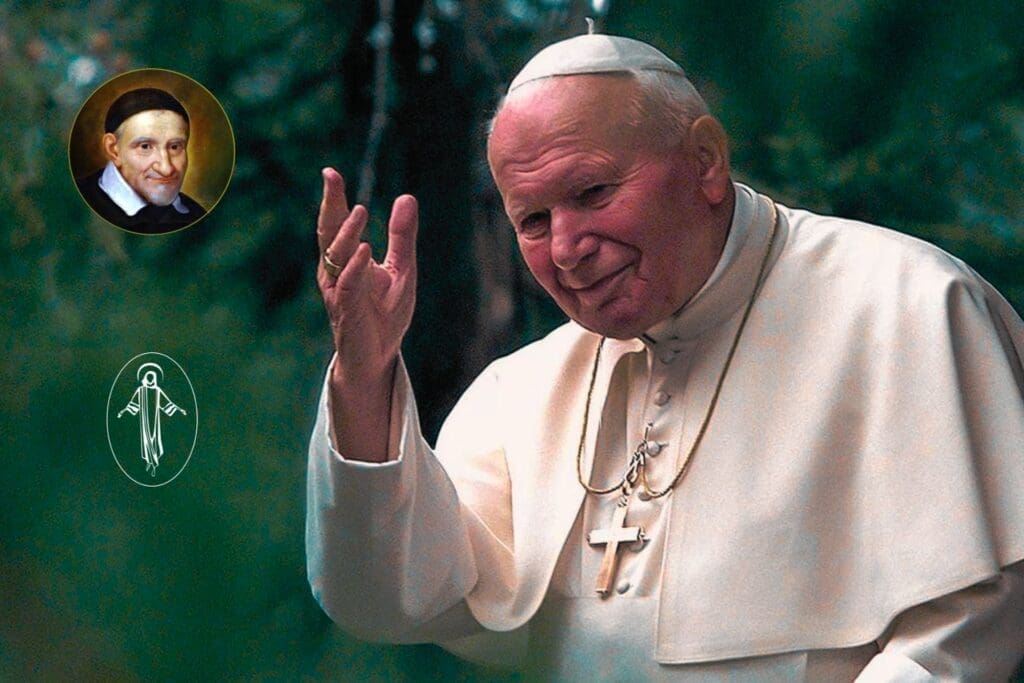
St Vincent de Paul, a saint who dedicated his life to serving the poor and forming strong and charitable communities, embodies in many ways the essence of consecrated life described in the Apostolic Exhortation “Vita Consecrata” by Pope John Paul II. His life and work, along with those of the Congregation of the Mission, reflect a deep and tireless commitment to charity, community, and mission, principles that resonate with the key points of the papal document. While “Vita Consecrata” explores and celebrates the richness and depth of consecrated life as a whole, the charisma and legacy of San Vincenzo offer a concrete and inspiring manifestation of these principles in action. By examining the nine key points of the document, we can discover and reflect on how the Vincentian life and mission are a shining example of these principles lived with authenticity and fervor.
Following Christ chaste, poor, and obedient
St. Vincent de Paul, with his example and teachings, embodied the principle of chastity, poverty, and obedience. His life was dedicated to serving the poor, living himself in a humble and obedient way to the divine will, parallel to the first point of “Consecrated Life” that emphasizes the importance of following Christ totally and without reservation.
Being Experts in Communion
The Vincentian community has always emphasized the importance of communion and fraternity. St. Vincent firmly believed in the power of community and working together to achieve common goals, in line with the second point that highlights the importance of communion in consecrated life.
Servants of the Church in Its Mystery of Communion
St. Vincent and his community served the Church through various charitable works, showing deep respect for the mystery of ecclesial communion, in line with the third point that speaks of service and dedication to the Church and its mystery.
Prophecy
The life and work of St. Vincent were prophetic in his time, as he not only spoke but actively acted for social change and justice, reflecting the fourth point that sees consecrated life as a form of prophecy in the Church.
Sign of Hope
St. Vincent has always represented a sign of hope for the poor and marginalized, consistently with the fifth point that identifies consecrated life as a sign of hope and resurrection.
On Mission
The Vincentian mission has always been centered on evangelization and service, particularly towards the most needy, parallel to the sixth point that speaks of the importance of mission and evangelization in consecrated life.
Formation for Consecrated Life
The formation of members of the Vincentian community has always been a priority for St. Vincent, in line with the seventh point that emphasizes the importance of ongoing formation in consecrated life.
Fraternity in Consecrated Life
Fraternity is a key element of the Vincentian charism, seeing all members of the community as brothers and sisters, in line with the eighth point that emphasizes the importance of fraternity in consecrated life.
Inter-Religiosity and Consecrated Life:
Although St. Vincent mainly operated within the Catholic Church, his message of charity and service can be seen in parallel with the ninth point that speaks of the importance of dialogue and collaboration among different religious traditions.

